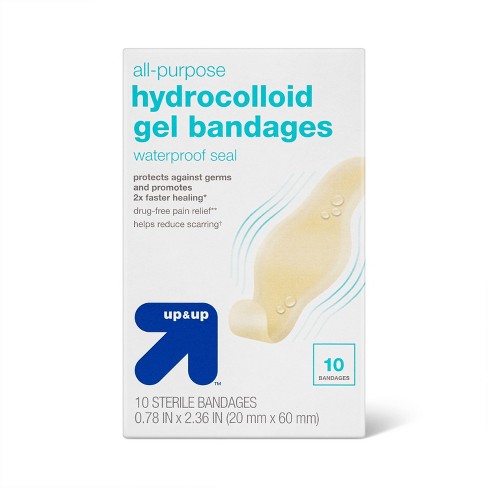Hydrocolloid Bandages: An Innovative Solution for Wound Care
Hydrocolloid bandages are a type of adhesive bandage that provide a new and innovative solution for wound care. They are designed to provide superior protection, comfort, and healing for various types of skin injuries and conditions. In this article, we will take a closer look at what hydrocolloid bandages are, how they work, and why they are a great choice for wound care.
What are Hydrocolloid Bandages?
Hydrocolloid bandages are made from a unique material that combines a gel and adhesive substance. This creates a waterproof, breathable, and flexible bandage that is able to promote healing and reduce pain and discomfort. They are available in various shapes, sizes, and designs, making them suitable for use on a wide range of skin injuries and conditions.
How Do They Work
The science behind hydrocolloid bandages is simple yet effective. The gel substance within the bandage is able to absorb and retain fluids, such as exudate, away from the wound site. This helps to reduce the risk of infection and promotes a more controlled healing process. Additionally, the adhesive substance in the bandage ensures that it stays in place, providing long-lasting protection and comfort.
Advantages of Hydrocolloid Bandages over Traditional Bandages
There are several advantages of using hydrocolloid bandages over traditional bandages. Firstly, hydrocolloid bandages are more comfortable to wear and do not stick to the wound site, reducing pain and discomfort during removal. Secondly, they are more effective at promoting healing and reducing the risk of infection. Finally, hydrocolloid bandages are also waterproof, making them suitable for use in showering and bathing.
Uses of Hydrocolloid Bandages
Hydrocolloid bandages are suitable for use on a wide range of skin injuries and conditions. Some of the most common skin conditions that can benefit from the use of hydrocolloid bandages include blisters, cuts, scrapes, burns, and abrasions. They are also ideal for use on areas that are prone to moisture, such as the feet and hands, making them a great choice for athletes and manual workers.
Features of Hydrocolloid Bandages
Materials and Construction
Hydrocolloid bandages are made from a combination of materials, including a gel substance, an adhesive substance, and a flexible backing. These materials work together to create a waterproof, breathable, and flexible bandage that provides long-lasting protection and comfort.
Different Types of Hydrocolloid Bandages
There are several different types of hydrocolloid bandages available, each designed for specific uses. Some of the most common types include blister bandages, wound care bandages, and wound filler bandages. It is important to choose the right type of hydrocolloid bandage for your specific needs to ensure maximum benefits and results.
Choosing the Right Bandage
Factors to Consider
When choosing a hydrocolloid bandage, there are several factors to consider. Firstly, you need to consider the size and shape of the bandage, as well as the location of the wound. Secondly, you need to consider the type of wound, as different bandages are designed for specific types of injuries. Finally, you should also consider the brand and product reviews, as this will give you an idea of the quality and effectiveness of the bandage.
Proper Use and Care of Hydrocolloid Bandages
Application and Removal Instructions
It is important to follow the manufacturer’s instructions when applying and removing a hydrocolloid bandage. Generally, the bandage should be applied to clean and dry skin, and it should be removed carefully to avoid causing pain or discomfort. If the bandage becomes loose or damaged, it should be replaced as soon as possible.
Maintenance and Storage Tips
Hydrocolloid bandages should be stored in a cool and dry place, away from direct sunlight and heat sources. They should also be kept away from sharp objects and should not be reused. If the bandage becomes dirty, it should be replaced with a new one.
Conclusion
Hydrocolloid bandages are a great choice for wound care, providing superior protection, comfort, and healing. They are designed to promote a controlled healing process and reduce the risk of infection. With a wide range of shapes, sizes, and designs, and are suitable for use on a wide range of skin injuries and conditions.
In conclusion, hydrocolloid bandages are a must-have for anyone looking for an effective and comfortable solution for wound care. They offer a range of benefits over traditional bandages and are a great investment for your health and well-being.










